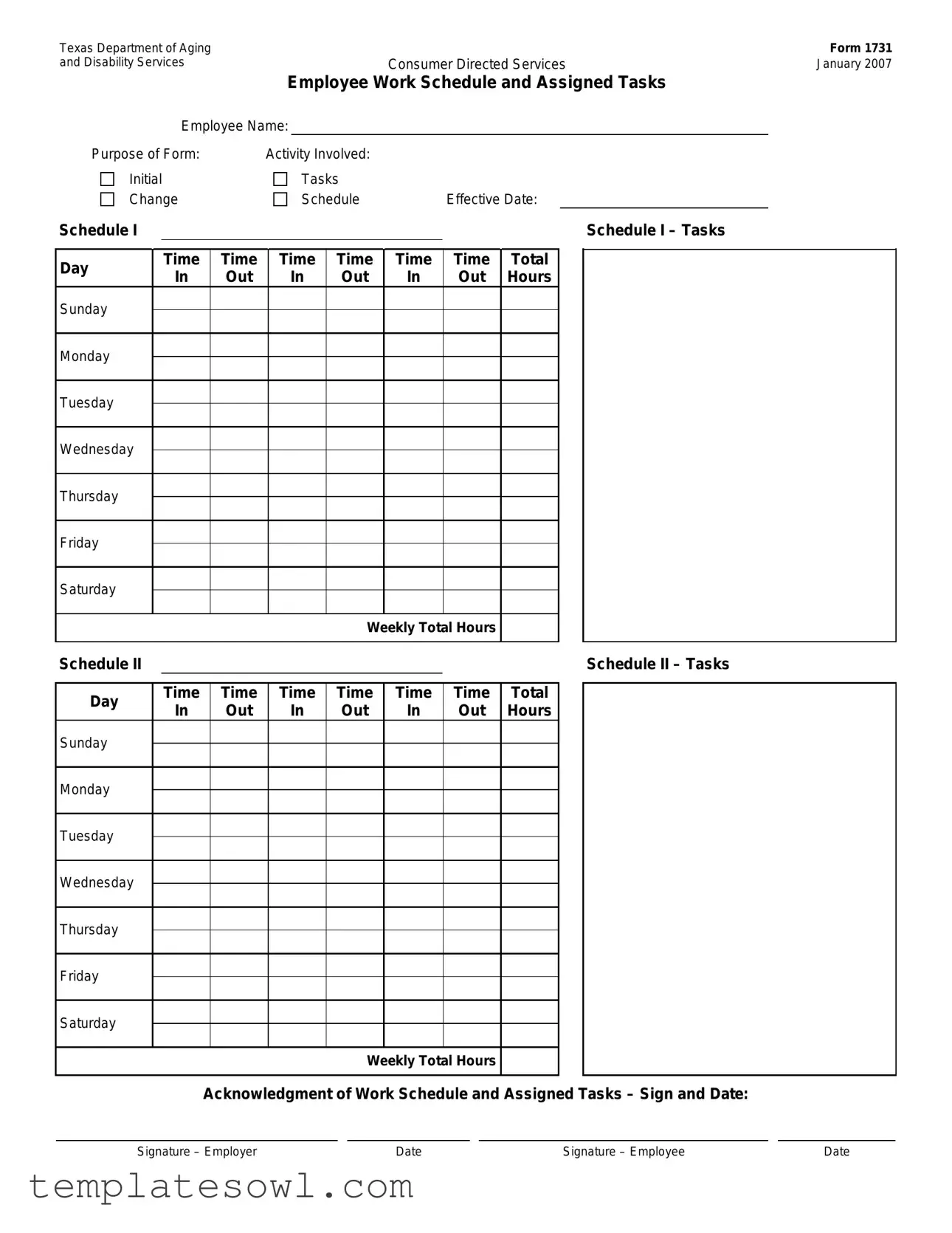Filling out forms correctly is crucial for effective communication and processing, especially when dealing with the Texas Department of Aging and Disability Services. One common mistake involves not specifying the employee name correctly. Providing an incorrect or incomplete name can lead to confusion and delay in processing the form.
Another frequent error pertains to the initial tasks section. Inadequately detailing the tasks assigned can create misunderstandings about the employee's responsibilities. It is essential to describe tasks clearly to ensure that both the employer and employee are on the same page regarding expectations.
People often overlook the effective date when completing the form. Failing to indicate the start date for the work schedule can create administrative headaches. This date serves as a critical reference point for tracking the beginning of employment and associated tasks.
In Schedule I and Schedule II, individuals tend to forget to record the total hours worked for each week accurately. If hours are added incorrectly, this could lead to issues with payroll or service delivery. Double-checking calculations is vital to avoid potential discrepancies.
Another common mistake is neglecting to include a complete acknowledgment of work schedule and assigned tasks by both the employer and employee. Signatures are necessary to confirm that all parties agree on the schedule and responsibilities. Without these, the form might not hold up under scrutiny.
Moreover, people sometimes make errors in the day and time entries in both schedules. Accurate time tracking is essential, as even small discrepancies can accumulate over time, causing significant issues for payroll and compliance.
It is also important not to use ambiguous language when describing tasks or schedules. Clarity ensures that both employees and employers can interpret the information with no room for misunderstandings. Words that are too vague can lead to confusion or a lack of accountability.
Another mistake occurs when individuals do not keep a copy of the completed form. Retaining a copy is a best practice that can protect all parties involved in case of future disputes or misunderstandings. This simple step can save considerable time and stress later on.
Finally, failing to review the form before submission can result in overlooked errors. A careful review helps to catch any mistakes that may have been made during the completion process. Taking the time to confirm the information will facilitate a smoother experience for everyone involved.

